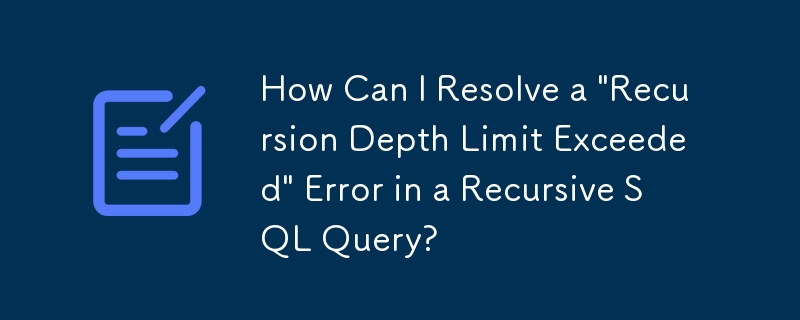Found a total of 10000 related content
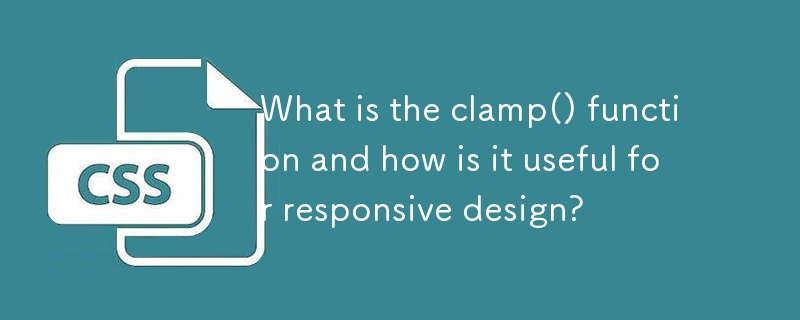
What is the clamp() function and how is it useful for responsive design?
Article Introduction:CSS' clamp() function realizes dynamic adjustment in responsive design by setting the minimum, preferred values ??and maximum values. It allows properties such as font size, spacing, etc. to smoothly adapt to different screen sizes. For example: font-size: clamp(1rem, 2.5vw, 2rem) means that the font is not less than 1rem on the small screen and not more than 2rem on the large screen, and 2.5vw is preferred for scaling. In addition, clamp() can also be used to control numerical properties such as inner margins and widths, such as padding: clamp(16px, 5%, 32px) to ensure that the inner margins maintain a reasonable range on different devices. Its browser support is good and is suitable for modern mainstream browsers. It is recommended to use it with relative units and
2025-07-01
comment 0
523
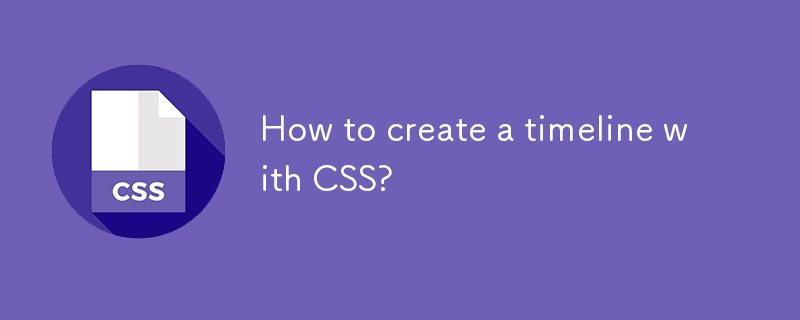
How to create a timeline with CSS?
Article Introduction:Creating a CSS timeline requires only HTML and CSS, no JavaScript required; 2. Use structured HTML containing time points and content; 3. Draw the central vertical line on the container through the ::before pseudo-element; 4. Use flexbox layout and positioning to control the arrangement of content on the left and right; 5. Add circular marking points for each time point; 6. Implement responsive design through media query, arrange the content on the left side and adjust the timeline position on the small screen; finally realize a beautiful and responsive vertical timeline, and is displayed with multiple devices.
2025-08-01
comment 0
958
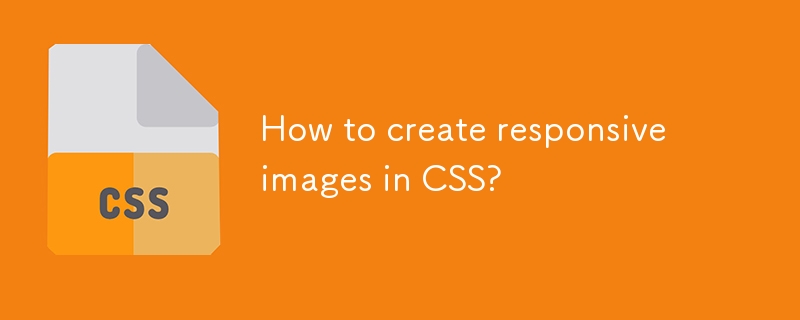
How to create responsive images in CSS?
Article Introduction:The core of the implementation of responsive images is to use HTML's srcset and sizes attributes to match CSS styles. 1. Use srcset to specify multiple pictures of different sizes and mark their widths (such as 480w, 800w, 1200w), so that the browser can automatically select the most suitable picture according to the viewport width; 2. Define the display ratio of the picture under different screen sizes through sizes, for example, "(max-width:600px)100vw" means that the small screen occupies the full viewport, otherwise it will occupy half of the width; 3. Set img{max-width:100%;height:auto;} in CSS to ensure that the picture is adaptable to the container and maintain the proportion; 4. Optionally, in srcset
2025-06-28
comment 0
720

How to use media queries for responsive design
Article Introduction:Media query is the basic tool for responsive website design, enabling multi-device compatibility by switching styles based on device characteristics (such as screen width). Its basic syntax is @media media type and (condition){CSS rules}, for example, using @mediascreenand(max-width:767px) to adjust the style of the small screen. It is recommended to adopt a mobile priority strategy, first define the mobile phone style and then gradually adapt to a larger screen. Pay attention to when using: ① Select a general breakpoint instead of a specific device size; ② Set the viewport meta tag to ensure that the mobile terminal takes effect; ③ Avoid relying solely on browser zoom tests; ④ Only modify the styles that need to be adjusted in media queries. Mastering media queries helps build a responsive layout with clear structure and easy to maintain.
2025-06-30
comment 0
507
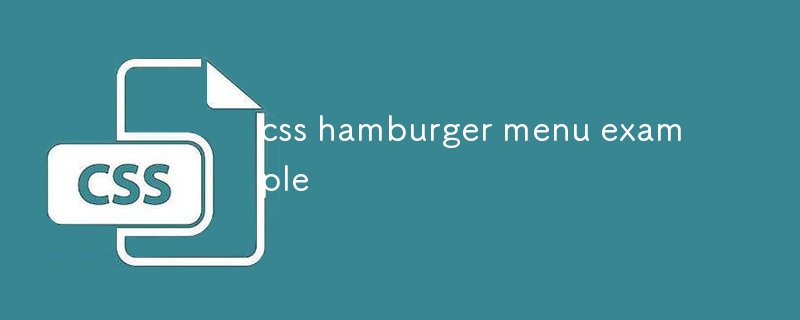
css hamburger menu example
Article Introduction:The hamburger menu implemented in pure CSS expands the right sliding menu when the button is clicked on a small screen and changes the icon to a fork. The hidden buttons on the large screen display horizontal navigation; 1. Use hidden checkbox to trigger interaction with label; 2. Use checked pseudo-class to control menu display and animation; 3. The hamburger icon is composed of three horizontal lines. When selected, the first and third rotations form a fork, and the second transparent disappears; 4. The menu is initially placed outside the right side with fixed positioning, and expands right:0 when selected; 5. Media query switches to horizontal layout and hides the hamburger button when the screen is greater than 768px; this solution does not require JavaScript, supports responsive switching and transition animation, suitable for basic scenes, and can be added by adding AR
2025-08-01
comment 0
462
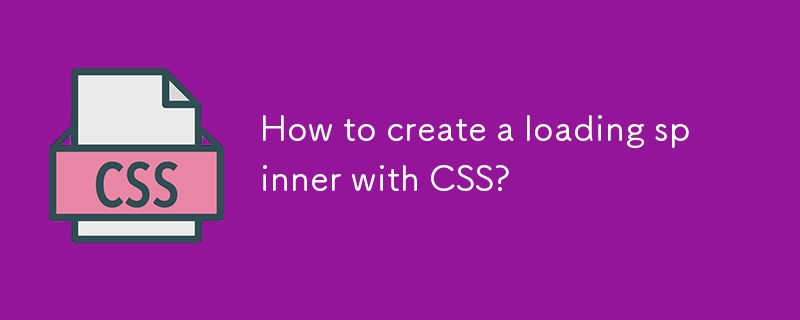
How to create a loading spinner with CSS?
Article Introduction:Creating a CSS loading spinner requires only a div element as the HTML structure. 2. Use CSS to set width, height, border, rounded corners and animation properties, and achieve rotation effect by changing the border color and applying 360-degree rotation animation. 3. You can customize the size, speed, color and border thickness to match design needs. 4. Center the rotator in the container or center of the screen through the flex layout. In the end, a lightweight, modern browser-compatible loading indicator can be achieved with just a small amount of code, which is suitable for AJAX loading, page transition and other scenarios.
2025-07-25
comment 0
815

What is a static site generator SSG
Article Introduction:Static Site Generator (SSG) is a tool that automatically converts content, templates, and configurations into static web pages. 1. It reads content files such as Markdown, 2. It uses the template engine to render the page structure, and 3. Finally generates deployable HTML, CSS and JS files. Suitable for content creators, developers and small teams to quickly build blogs, documents or official websites, with the advantages of fast speed, good security, and simple deployment. Common tools include Jekyll, Hugo, Gatsby and Eleventy. Beginners recommend starting with active and well-documented tools, and gradually mastering core concepts such as templates, layouts and construction processes.
2025-06-27
comment 0
469
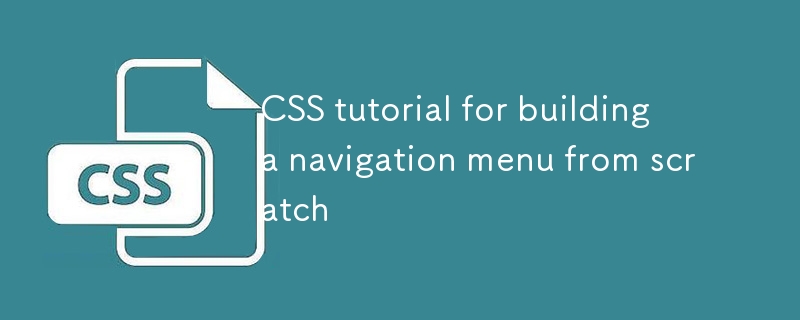
CSS tutorial for building a navigation menu from scratch
Article Introduction:To create a CSS navigation menu, first build the structure using HTML's nav elements and an unordered list, then implement horizontal layout through Flexbox, and add hover effects and responsive design. 1. Use semantic HTML structures to include nav, ul, li and a tags; 2. Use Flexbox to set display:flex, gap and list-style:none to achieve horizontal arrangement; 3. Add link styles, hover effects, transition animations and focus states; 4. Use media query to adjust the flex-direction under the small screen to column to achieve vertical stacking layout. The whole process is simple and clear, suitable for mastering basic layout techniques.
2025-07-02
comment 0
906
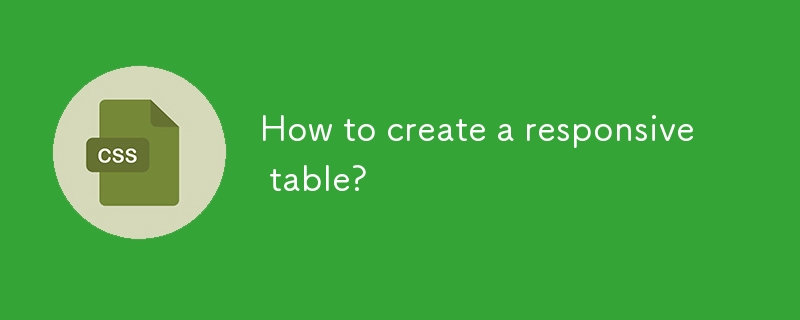
How to create a responsive table?
Article Introduction:Use semantic HTML to create basic tables; 2. Use responsive CSS technology: Option A sets horizontal scrolling through containers, suitable for tables with moderate columns; Option B stacks tables into a card-style layout through media queries under a small screen, and adds data-label attributes to improve readability; Option C uses Flexbox or Grid to simulate tables, with high flexibility but attention to accessibility; 3. Avoid fixed width, use relative units, test real devices and ensure barrier-free support; the best solution depends on data and user needs. Option A is recommended in most cases, and option B is selected for mobile priority. All methods need to be kept concise and tested as early as possible to ensure cross-device readability and usability.
2025-07-26
comment 0
425

How to make an HTML page responsive
Article Introduction:The key to making responsive HTML pages is to combine CSS and media queries to automatically adapt to different screen sizes. 1. Use viewport meta tags to control mobile display: 2. Set breakpoints through media queries, such as mobile phone max-width:480px, tablet 481px-768px, desktop 769px or above; 3. Use Flexbox or Grid to achieve elastic layout; 4. Use max-width:100% to prevent overflow of containers; 5. Use mobile-first strategy to write basic styles for small screens first and then gradually enhance them. These steps can effectively improve page adaptability and avoid common problems.
2025-07-09
comment 0
148

How do I create tables in HTML using the , , , and elements?
Article Introduction:To create an HTML table, first use the tag as the container, then define the rows, and then define the header or data cells through or separately. 1. Use as a table container; 2. Create table rows with use; 3. Use title cells that define bold and centered; 4. Use normal data cells to define normal data cells; 5. Keep the number of cells per row consistent to ensure clear structure; 6. Use CSS to add borders, inner margins and other styles to improve readability; 7. Avoid using tables for page layout, and focus on displaying structured data; 8. Consider responsive design to adapt to small screen display.
2025-06-22
comment 0
394

How can you make an HTML layout responsive?
Article Introduction:To realize the responsive design of HTML layout, you must use viewport meta tags, media queries, relative units, elastic layouts, responsive media, mobile-first strategies, and elements hiding or rearrangement. 1. Add viewport meta tags to correctly scale the page; 2. Use media queries to apply styles for different screen sizes; 3. Use relative units such as %, rem, em, vw to replace fixed pixel values; 4. Use Flexbox or CSSGrid to create an adaptable grid layout; 5. Set the maximum width of the picture to 100% and use containers to control the video proportions; 6. Use mobile-first CSS design to expand styles from small screens to large screens; 7. Hide or adjust the display order of elements on small screens to optimize the experience, and finally use real devices or development
2025-08-04
comment 0
495
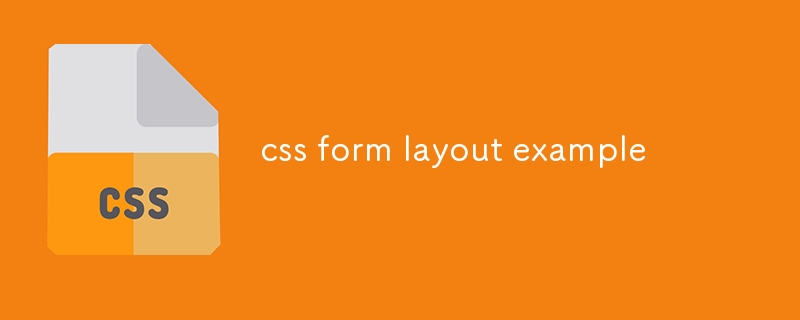
css form layout example
Article Introduction:The form layout adopts a responsive design and is suitable for multiple devices; 1. Use a semantic HTML structure, including name, email, phone and message fields; 2. CSS sets the centered container, rounded border and background colors to improve visual effects; 3. Each form item is arranged vertically, the label is bold and the associated input box enhances accessibility; 4. The input box and text field are 100% wide, the inner margin is unified, and blue shadows are displayed when focusing; 5. The submit button is full-width green, hovering to dark green, improving interactive feedback; 6. Reduce spacing and fonts on the small screen through media queries; 7. It is extensible to use flex layout to achieve side-by-side input; 8. It is recommended to add JavaScript verification and error styles to enhance functions. The overall structure is simple and practical, and can be directly integrated into the item
2025-07-25
comment 0
345
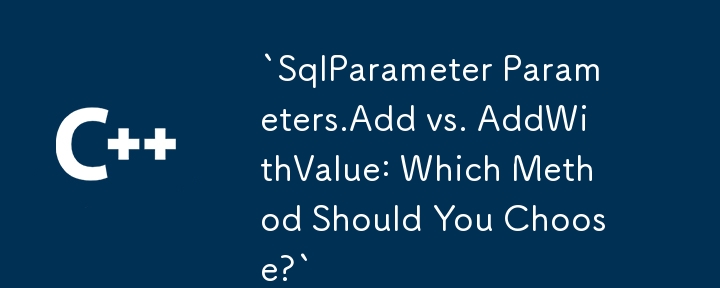

Dave The Diver: How To Catch Spider Crabs
Article Introduction:In Dave The Diver, there are some creatures that are not easy to catch. Or, catch alive that is. The spider crab is one of those very species, making it seem like the only way to bring these crustaceans back up to land is to viciously crack them up w
2025-01-10
comment 0
864

Prepare for Interview Like a Pro with Interview Questions CLI
Article Introduction:Prepare for Interview Like a Pro with Interview Questions CLI
What is the Interview Questions CLI?
The Interview Questions CLI is a command-line tool designed for JavaScript learners and developers who want to enhance their interview
2025-01-10
comment 0
1491



















